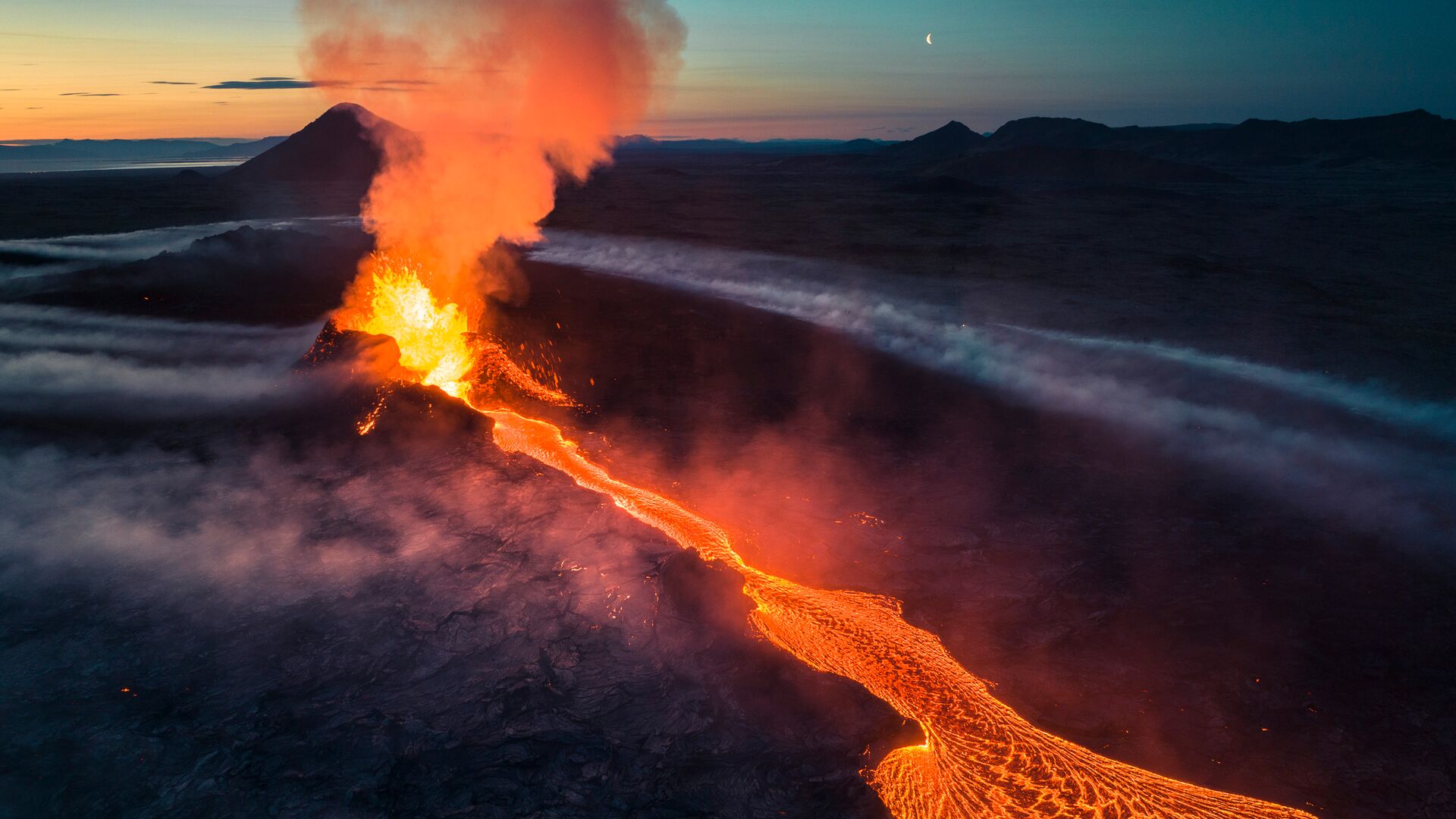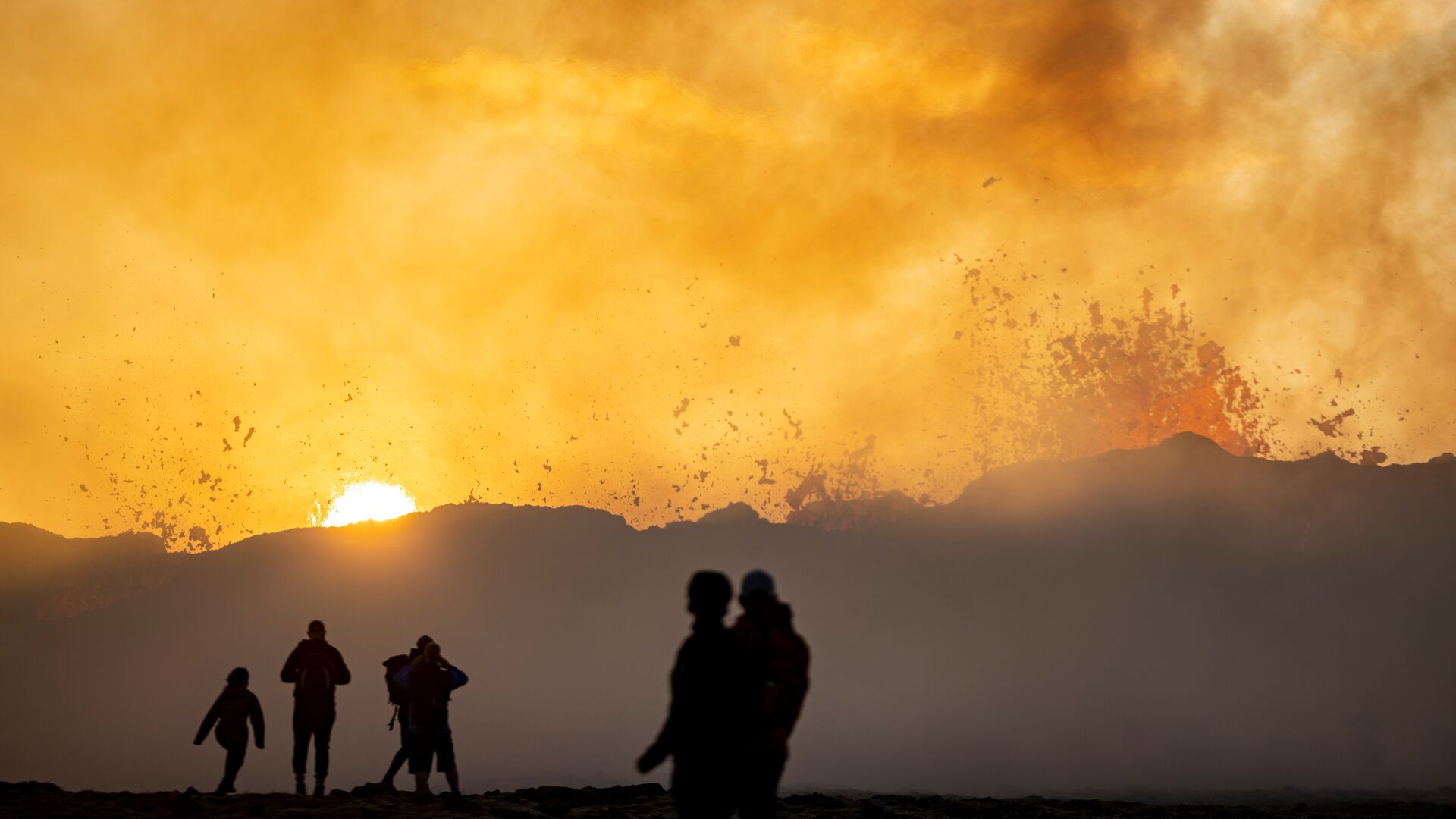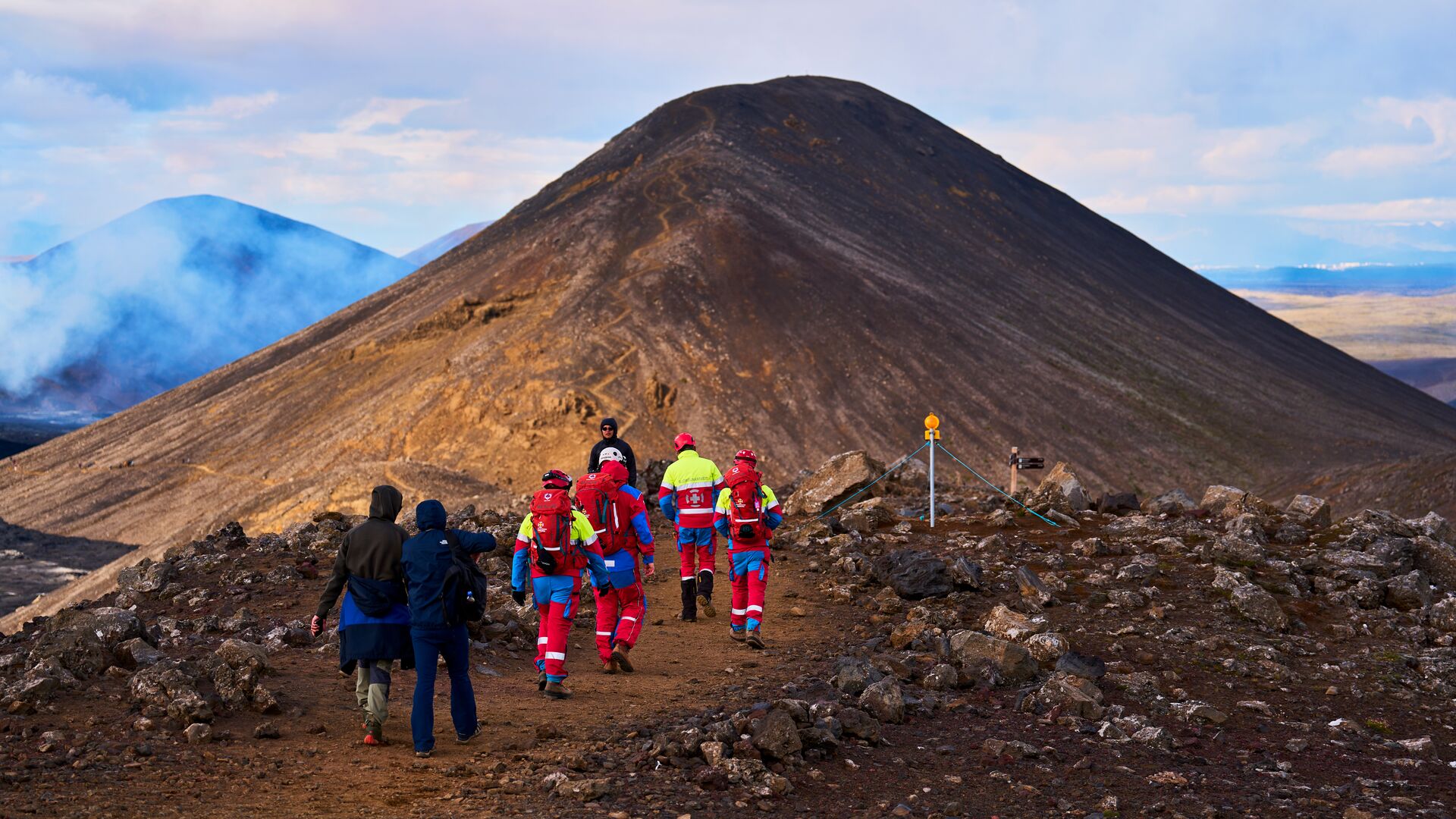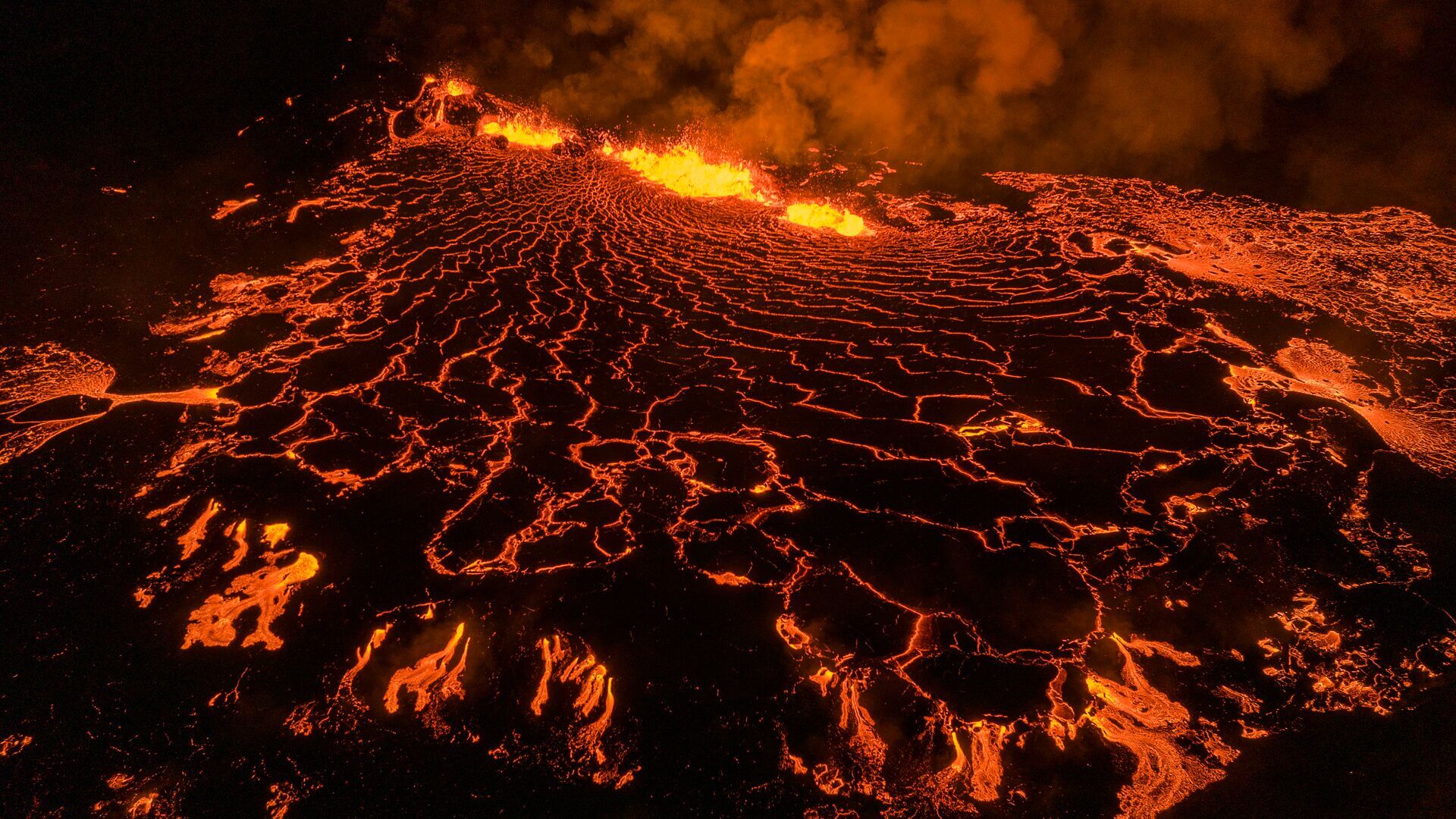Iceland continues to impress visitors and locals alike with epic displays of volcanic activity. And in 2021, a volcano awoke to put on a show after 800 years of inactivity.
Unlike the well-known 2010 Eyjafjallajökull eruption, this latest volcano isn’t producing ash, so air travel hasn’t been affected.
Keep reading to uncover everything you need to know about the fiery Fagradalsfjall volcano. You’ll learn all about the latest eruptions and activity in the region.
- Learn about the newest eruption on our volcanic activity page
Good to know: At Nordic Visitor, we stay up-to-date with volcanic activity in Iceland. We also make sure our clients are informed about any potential disruptions to travel plans and take care of any itinerary changes.
Where is the Fagradalsfjall volcano located?
You’ll find the Fagradalsfjall volcano on the Reykjanes peninsula in the southwest part of Iceland. Nearby, there’s the capital Reykjavík, Keflavik International Airport and the famous Blue Lagoon.
The Reykjanes peninsula is a highly volcanically active area, with some of the youngest parts of Iceland here. Several new cracks (“fissures”) have opened in the ground over the last few years. Today, you’ll see fresh lava formations, black sand plains, and other landforms that are changing the landscape.
You don’t often get to visit a nation while it’s still forming – so it’s certainly worth visiting!
- Explore geological wonders on an Iceland volcano tour
- Related: Incredible places to see on the Reykjanes peninsula

When did the last volcano start erupting in Iceland?
The Fagradalsfjall volcano began erupting back in March 2021, after remaining dormant for 800 years. Since then, there have been eruptions on the Reykjanes peninsula every year. But lava hasn’t all been flowing from one place, instead, it has come through new fissures in the ground.
Why are there so many volcanoes in Iceland?
You might have heard Iceland referred to as the “Land of Fire and Ice”. It earned this nickname because it’s one of the most volcanically active countries in the world.
In recent years, Iceland has reminded us just how accurate this nickname is, with several new eruptions on the Reykjanes peninsula. You might have seen pictures of bright orange lava flowing from the cracks in the earth.
Some scientists believe that the region is waking up after lying low for so long. In fact, the country may have entered a period where you’ll see eruptions quite frequently.
The reason is because of Iceland’s location on the Mid-Atlantic Ridge. Here, the North American and Eurasian plates meet and pull apart, causing slow movement that eventually creates new cracks in the earth.
Over the last few years, some of the eruption sites have become must-see attractions in Iceland. Seeing active or sleeping (“dormant”) volcanoes with your own eyes is undoubtedly an experience you’ll remember!

When is the best time to visit the Icelandic volcano?
The best time to see a volcano in Iceland is when you can still see the fresh lava flowing, but the area is deemed safe to visit by local authorities.
That said, visiting any geothermally active area is an exciting experience. You’ll see fascinating natural formations like volcanic fumaroles, mud pools and hot springs.
It's worth bearing in mind that volcanic eruptions are natural phenomena. This means that it helps to be open-minded and flexible when planning your volcano visit.
Get up-to-date information about volcanic activity on local sites, including:

What should I pack when I visit the Iceland volcano?
Please respect the advice of Icelandic authorities. If the hiking trails are open and you’re confident you can complete the routes, you’ll want to be prepared for the journey.
Good hiking boots are recommended, of course. And as on any hike in Iceland, weather conditions can change quickly, so bring a waterproof jacket and warm layers.
Some volcano hikes can take several hours, meaning you’ll need plenty of food and water with you.
Lastly, you’ll want to bring a decent camera. While a smartphone camera can capture any lava flow, an SLR with a zoom lens will offer you the best quality shots. This is because you should keep a safe distance from the fissure at all times.
So, to recap, your volcano trip packing list should include:
- Sturdy hiking shoes
- Walking poles, if you feel you need them
- Waterproof jacket and warm layers
- Food and water
- SLR camera

Can you help me plan my visit to Iceland?
You’ll be happy to learn that Iceland has plenty of volcanoes worth visiting. And you can explore these geological wonders on an Iceland volcano tour.
To find out more about any volcanic activity near Fagradallsfjall, check out this Iceland volcano eruption page. You’ll get the latest updates, along with answers to frequently asked questions.
Ready to start planning your Iceland volcano trip? Nordic Visitor will put together the perfect itinerary so you can experience Iceland’s natural attractions.
Your Reykjavík-based travel consultant will take care of everything for you. They can customise your tour to suit your needs and will reserve your accommodation, local transport and activities.
Our local experts stay up-to-date with volcanic activity in Iceland and will be able to advise you about your trip. Plus, when you’re sure our clients are informed about any potential disruptions to travel plans and take care of any itinerary changes.
All you need to do is book your flight and enjoy your trip! Plus, once you arrive in Iceland, you’ll have access to our 24/7 helpline.
Get in touch for up-to-date travel advice from our Reykjavik-based consultants and expert help planning your perfect Iceland itinerary.
